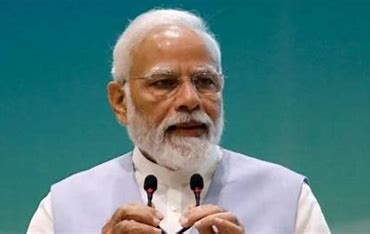
No establishment which depends for existence on paying fees less than living wages to its workers has any right to continue. By living wages, it is meant more than the bare subsistence level- the wages of decent living” – Franklin D. Roosevelt
The multiplicity of labour laws and their compliance burden has often been cited by domestic industries and foreign investors as an obstacle to investment. With the objective of increasing investor confidence and simplifying and rationalising the existing labour laws, the government announced an amalgamation of 44 labour laws into 4 codes, namely on (i) wages; (ii) industrial relations; (iii) social security and welfare; and (iv) occupational safety, health and working conditions. The Code on Wages 2019, the first amongst the four codes, was enacted to amend and consolidate the laws relating to wages and bonus and matters connected therewith or incidental thereto. This code consolidates four major legislations namely the Payment of Wages Act, 1936, Minimum Wages Act, 1948, Payment of Bonus Act, 1965 and Equal Remuneration Act, 1976 which basically regulated the wages received by the workers.
Recently, it had been in news that the Government is eyeing to enforce these legislations shortly. In the backdrop of this development it becomes essential for one and all to become aware of some of the problematic elements of the Code and the Draft Central Wage Rules such that one may be prepared to deal with the same and if required devise appropriate ways to mitigate its effects.
AREAS FOR RECONSIDERATION AND IMPROVEMENT: FIXATION OF NATIONAL LEVEL FLOOR WAGE
In 2018, the Government of India constituted an Expert Committee under the Chairmanship of Dr. Anoop Satpathy for fixing the National Minimum Wage. In the final report titled Report of the Expert Committee on determining the Methodology for Fixing the National Minimum Wage of January 2019, the committee submitted its recommendations after considering the existing labour conditions, the guidelines of the Indian Labour Conference of 1957 and the Supreme Court case of Workmen v. Reptakos Brett & Co., and fixed the National Minimum Wage equal to Rs. 375/ per day, irrespective of the sector of employment, skill or whether the place of employment was rural or urban. However, the recommendation, was not incorporated in the Code and the National Floor Minimum Wage was fixed as low as Rs. 178 per day, perhaps less than even the existing wage rate at certain places.
Section 9 of the Code provides for the determination of a National-level floor wage, which would basically set a minimum benchmark for payable wages. For the purpose of making the quantum of wages reasonable as well as uniform this is a welcome policy measure introduced by the Government. In that regard, Rule 3 of the Draft Central Rules states, that the size of a general working class family would be deemed to be 4 members, wherein the earning member would be counted as 1 consumption unit, spouse as 0.8 and 2 children as 0.6 consumption unit each. This is where some problem creeps in to the Code. This calculation does not account for the elderly and other dependents who are generally present in an Indian family. Even as per the data available from the 2011 Census, the average household size in India was 5 (exact mean value 4.8). Thereafter, the said rule refers to a requirement of 2700 calories per day per consumption unit, which again is barely enough in consideration of the nutritional requirements. It is assumed that women will consume 20% less and children will consume 40% less than that assigned for a male member, thus making the law insensitive to women and static and unresponsive to the increasing nutritional requirements of growing children (a 14-year-old child may not have the same diet as that of 7-year-old child). Though this rule might not lead to nutritional deficiencies per se, yet provided the opportunity, it might neither contribute expectedly in improving the condition of health and malnutrition among women and children nor in improving the social status of women in the society.
Further, the method provided for calculating house rent as 10 percent of food and clothing expenditure disregards the realities of workers living in cities and the existing cost of living and might fail to ensure them liveable housing conditions. Lastly, the provision for setting aside 25% of minimum wages for expenditure on children’s education, medical needs, recreation and to meet contingencies, also appears to be insufficient, as the difference in cost rises to over seven times in urban centres, where the average expenditure in government hospitals is Rs 7,189 as against Rs 42,540 in private hospitals.
Observing the high costs of education, medical facilities etc. these days, the provisions do not seem adequate.
PERIODICITY OF FIXATION OF FLOOR WAGE
Rule 11(4) of the Draft Central Rules states, that the Central Government “may” revise the floor wage, ordinarily every five years and also “periodically” undertake to adjust the variations in the cost of living, in consultation with the Central Advisory Board. Use of these uncertain terms open scope for delay in the process of revision and can lead to interpretations and misinterpretations that may result in stagnation of floor wage rates in future and thus defeat the purpose of floor wage rates itself. Thereafter, even the period of revision of floor wages coincides with the period of revision of minimum rate of wages and since former is the point of reference for the latter, the periodicity of revision of floor wages should be shortened, for the expected realisation of its raison d’être.
BONUSES TO ALL
Initially the scope of guaranteed bonus (not linked to the performance of an individual) was restricted only to those employees who earned up to Rs 21,000 per month. The new Code refers to stipulation of a wage threshold by the appropriate government, and employees whose wages did not exceed this amount would be entitled to a guaranteed bonus which would be in the range of 8.33 percent to 20 percent, depending upon the allocable surplus available in the organisation. However, the Code provides that even those employees who earn above this threshold, would be entitled to receive a bonus (in the same percentage range) and the amount payable would be calculated as if their wage was such an amount, so determined by the government or equal to the minimum wage fixed by the appropriate government, whichever would be higher. Now this, would not only dilute meritocracy and add to an organisation’s cost burden but also lead to issues in compliance, for Companies having operations in different states of the Country, if the different state governments fix a different ceiling for payment of bonus. Thus, employees receiving the same pay might become eligible for different amounts of bonuses.
CODE SANS WAGE THRESHOLD
Obligations relating to payment of minimum wages have been extended to all employees that is individuals even in administrative and managerial roles, without any wage threshold, as per Section 5 of the Code. In comparison, the existing Payment of Wages Act currently extended only to those individuals whose wages did not exceed Rs 24,000 per month. Since no such wage limit has been contemplated by the Wage Code, these provisions might consequently be applicable even to senior employees, including even the one’s in the highest position in the organisation. This makes matters cumbersome and onerous for employers, especially when it comes to re-devising and structuring the pay and other benefit agreements of those senior employees, considering such arrangements generally involve claw back and other deduction provisions (which take away a substantial part of that which has been given to them), which may not be consistent with this law.
CONCLUSION
The Code on Wages, 2019 is no less, than a landmark in the Indian Labour industry, especially with respect to the extent of simplification it has brought with respect to the various enactments, by meticulously consolidating the same in one single enactment. The new Codes are about to be enforced shortly but yet there are certain aspects which are problematic and require reconsideration. Firstly, neither the quantum National Floor Wage corresponds with the guidelines of the Expert Committee nor does it acknowledge the ordinary Indian family size and structure and adequately account for the actual needs and requirements of its beneficiaries.
Secondly, use of uncertain terms with respect to the periodicity of wage revisions and coinciding periods of revision of National Floor Wages and Minimum Wage Rates can lead to misinterpretations and consequently result in stagnation and delay in the process of revision of wages. Thirdly, issues such as lack of wage threshold and lastly, provision for payment of bonus to all, adds further uncertainty in the law and results in increased costs for the employers, thereby defeating one of the very fundamental objective of introducing this Code itself, that is of increasing the ease of doing business in India and providing an employer friendly work environment to the investors.















